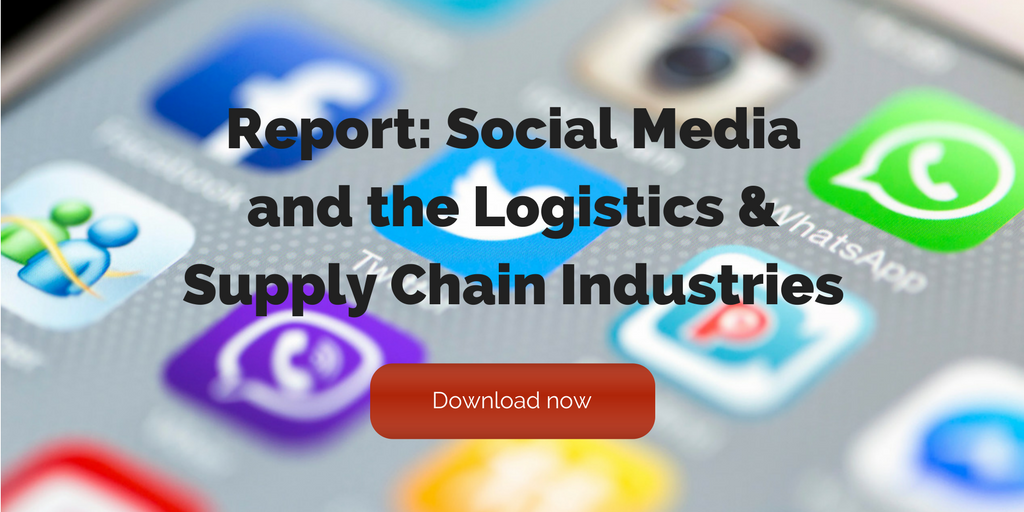
by Elizabeth Hines | Sep 19, 2018 | Blog, Content Marketing, Data/Analytics, Logistics, Marketing, Supply Chain
Automation has two major benefits for supply chain marketers: it drives efficiencies and improves success rates in earning and converting leads.
When you think about automation in the supply chain, you probably don’t immediately consider marketing and sales. Perhaps you envision robots scooting around warehouse floors, or maybe you think of applications in billing, compliance reports, or order auditing. However, advances in automation have impressive implications for marketing and sales in the supply chain as well.
Automation has two major benefits for supply chain marketers. Like all automation, it drives efficiencies, allowing your team to devote more time to other core competencies. What you may not know, however, is that it also improves success rates in earning and converting leads. In fact, HubSpot reports that businesses using marketing automation to nurture leads receive a whopping 451% increase in qualified leads.
New trends in marketing automation – particularly those which function more like artificial intelligence – can streamline and improve your marketing and sales efforts. Here’s how.
Integrate marketing automation into your CRM strategy
Integrating marketing automation into your customer relationship management (CRM) strategy may not be the first thing that came to mind, but the two work beautifully in tandem.
An integrated approach will take all three of the following areas to the next level:
- Track behavior. Automation lets you go far beyond basic demographic data, seeing things like what pages your prospects are visiting, what types of content they’re interested in, and where they are in the buying cycle.
- Send targeted messages. You can use the behavioral information collected by your marketing automation tool to create and send targeted messages that are customized to your prospects’ interests and stage in the buying cycle. This means your prospects will find your messages more relevant and engaging.
- Establish clear ROI. Establishing a clear link between marketing efforts and sales is a constant thorn in the side of most marketers, but new advances in automation make measuring ROI a little clearer. Creating a campaign in your marketing automation system maps it back to your CRM, so you can correlate closed deals directly with the campaigns that created them.
Basically, combining CRM with marketing automation can give you more organizational bandwidth, more precision in your messaging and lead nurturing, and more measurable value in your campaigns.
Create targeted messages with email workflows
There’s no area in which marketing automation is more helpful than in the creation of automated but extremely pertinent email workflows to your sales leads.
Based on the information you have about your leads and/or their engagement with your website, email workflows trigger a series of pre-determined highly-relevant emails at designated intervals, inviting them to take action and helping them to move down the sales funnel.
Email workflows do require considerable work upfront as you consider individual buyer profiles, their place within the buyer’s journey, and what timely and relevant information will advance them. But thoughtful well-designed email workflows can translate to substantial time savings and increases in lead conversion later.
More marketing automation: Social media scheduling tools & chatbots
Two other areas in which automation is making a big splash in marketing and sales are social media scheduling tools and chatbots.
The targeted approach of email workflows increases their chances of being read, but I don’t need to point out that – no matter how perfect your email might be – people are still buried in emails. On average, office employees receive 121 emails per day. Only around 20% are opened, and click-through rates are even lower.
[bctt tweet=”On average, office employees receive 121 emails per day. Only around 20% are opened, and click-through rates are even lower.” username=”Fronetics”]
So, in addition to email workflows, the newest trends in automation are social media scheduling tools and chatbots. Both of them can make your job much easier — and improve your bottom line.
Social media scheduling tools
Social media scheduling tools, like those offered by HubSpot and Hootsuite, let you plan and schedule content across your social networks.
For example, HubSpot’s comprehensive CRM and marketing platform includes the ability to automatically post to social media when you publish content, as well as in-depth analytical tools for determining the best time to post to social media platforms. You can also monitor social mentions and link your social media activity with larger marketing campaigns to determine ROI.
Hootsuite lets you keep track of various social media channels at once. It also helps you perform brand monitoring, letting you know when you brand is mentioned, and what your customers are saying.
As you can imagine, using a social media monitoring tool can greatly improve efficiency, cutting into the sometimes-seemingly-endless manual hours spent on social media monitoring and posting.
Chatbots
A chatbot is s a computer program that simulates human conversation using auditory or textual methods. It communicates with your customer inside a messaging app, like Facebook Messenger, and is similar to email marketing without landing in an inbox.
Chatbots are the latest trend in marketing, and their increasing popularity is making it harder to ignore how artificial intelligence is helping shape the content marketing landscape. It’s certainly timely. Business Insider recently reported that the number of people on messaging apps surpassed the number of users on social networks!
Messaging automation is the new email automation, and it can work for supply chain and logistics industries too. Chatbots currently allow for increased customer engagement through messaging app technology that isn’t yet saturated with marketing, and your brand will also appreciate the ease of tracking and segmenting your customers through chatbots.
Marketing automation is for the supply chain
Automation isn’t just for the warehouse or the finance and billing department. It’s also for this crazy constantly-changing world of marketing in supply chain and logistics industries. Marketing automation can make a big difference in your marketing and sales efforts.
Integrating automation with your CRM strategy, creating targeted email workflows, and the newest advances like social media scheduling tools and chatbots can all add up to major time savings and substantial increases in lead conversion rates.
This post originally appeared on EBN Online.
Related posts:


by Fronetics | Sep 18, 2018 | Blog, Content Marketing, Current Events, Logistics, Marketing, Social Media, Strategy, Supply Chain
Ask yourself these five questions before you dive headfirst into an influencer marketing campaign to set you on the right path.
We’ve been writing a lot lately about influencer marketing and how it can work for the supply chain. These campaigns can be extremely effective — but getting the most bang for your buck requires a strategic approach from the outset.
Before you start an influencer marketing campaign, ask yourself these 5 questions.
5 questions to ask before starting an influencer marketing campaign
1. Why do I want to use influencers?
According to Natasha Lekwa, influencer marketing and social media editor at Snapchat, it’s important to “make sure you have a clear idea why you want to use influencers.” Answers might include boosting brand awareness, gaining followers, or increasing sales, to name a few. But each of these answers will lead you to a different strategy.
Being fully and deliberately aware of why you’re embarking on a campaign will help you set key performance indicators, determine your audience, and “envision what success will look like at the end of the campaign.” You’ll also be able to choose strategically the best platform to use, based on your content and target demographic.
2. Who are my influencers?
It may seem obvious, but you’d be surprised how often businesses dive into an influencer marketing campaign without having fully identified key influencers in their sector.
Lekwa suggest using hashtags to search Instagram for appropriate influencers and advises not just focusing on the obvious influencers in your industry. In fact, exploring influencers in other related industries can help expand your reach.
3. Who are my micro-influencers?
[bctt tweet=”Micro-influencers can give you a much higher ROI than big stars, and audience engagement tends to get higher as social niches get narrower.” username=”Fronetics”]
So you’ve identified your major influencers. Now you can start thinking about your “micro-influencers,” those with 10K to 100K followers. “Micro-influencers can give you a much higher ROI than big stars, and audience engagement tends to get higher as social niches get narrower,” Lekwa says. And since engagement is the name of the game when it comes to any kind of social media marketing, micro-influencers can be enormously valuable.
4. What are your terms?
Since influencers tend to be content creators at heart, they often have plenty of great ideas. But it’s important that your goals are transparent and aligned.
“It’s important to be on the same page,” says Lekwa. “Having a clear contract that spells out what each side will execute will help manage expectations for both your team and for the influencer.” In fact, Lekwa points out that influencers generally appreciate having guidelines and “the big conceptual themes of a campaign handed to them.”
5. What is my own value?
Approaching influencers can be intimidating. As Forbes writer Andrey Slivka points out, “As you might expect from people who get deluged with free stuff, influencers can be hard to impress.” This means you need to be clear and specific when you approach them about what you have to offer.
“Especially with micro-influencers, who are building their brands, what you offer doesn’t always have to be monetary,” Lekwa says. Often, brands can offer influencers exposure, the prestige of having their own brand associated with a larger business, or the resources to improve their content production.
Influencer marketing can be daunting at first, but it’s a powerful tool of the supply chain. If you lay the right foundation, an influencer marketing campaign has the potential to expand your brand’s reach exponentially.
Related posts:


by Fronetics | Sep 13, 2018 | Blog, Content Marketing, Logistics, Marketing, Supply Chain
When sales and marketing misalignment plagues your organization, it can have motivational and financial consequences.
Imagine your business spending millions of dollars trying to fix one perceived problem — and it wasn’t even the problem, after all.
Too often, B2B companies fall victim to the dangers of sales and marketing misalignment, often without even being aware that it’s an issue. In fact, a recent study by HubSpot found that only 22% of companies report that their sales and marketing relationship is tightly aligned.
[bctt tweet=”HubSpot found that only 22% of companies report that their sales and marketing relationship is tightly aligned.” username=”Fronetics”]
That’s a big problem. And, recently, four business and marketing professors set out to explore just how bad it is for companies when sales and marketing don’t line up. In a recent article in the Harvard Business Review, Wendy Ritz, Michelle D. Stewart, Felicia N. Morgan, and Joseph F. Hair, Jr., described their findings from an experiment and interviews, designed to tackle the issue of sales and marketing misalignment, specifically in regard to the pricing of products and sales initiatives.
What’s wrong with sales and marketing misalignment?
The researchers identified three major dangers for businesses when sales and marketing don’t share goals.
Danger 1: Demotivation
A key part of motivation is the belief that a team can achieve its goal. When goals are misaligned, “it reduces the sales force’s perception that they can achieve either goal.”
In turn, the researchers point out that this demoralizing effect can reduce commitment to the organization, in addition to specific goals. In their experiment, they found that “the effect of misaligned goals reduced hope of the salespeople and created a defeatist climate.”
Danger 2: Goals seem insurmountable
Again, the perception that goals can be achieved is crucial. When sales and marketing are misaligned, people are much more likely to view goals as more difficult or even impossible to achieve.
The researchers point out that “while difficult goals are not necessarily problematic, the challenge is when the sales force believes that the misalignment of goals is simply unnecessary, or that the goal combination makes it impossible to be successful.” In other words, if goals don’t line up, you wind up with a sales force who feels defeated immediately.
Danger 3: It’s going to cost you
Remember the old adage, “Be careful what you wish for?” When it comes to sales and marketing misalignment, the highest cost often comes when goals are met.
“To compensate for the mismatch between pricing and sales force compensation goals,” the researchers found, “salespeople may offer additional resources such as free training, free freight, and customized products.” When goals seem insurmountable or counterproductive, sales teams find themselves resorting to desperate measures to get the job done — which can unnecessarily erode profits.
When things go right
According to a recent study by Data Room and Marketo, “Sales and marketing alignment can improve sales efforts at closing deals by 67% and help marketing generate 209% more value from their efforts.”
The survey found that sales teams closely aligned with their marketing counterparts ranked the quality of marketing-sourced leads much higher than those that were rarely aligned or misaligned. The bottom line: sales and marketing teams that are aligned perform better.
Thinking about getting your sales and marketing on the same page? Consider these six ways to boost sales and marketing alignment.
Related posts:


by Fronetics | Aug 22, 2018 | Blog, Content Marketing, Logistics, Manufacturing & Distribution, Marketing, Strategy, Supply Chain
Account-based marketing has traditionally utilized outbound marketing tactics, until now.
Account-based marketing has been around for decades, but it has been gaining a lot of attention in the past few years. More and more companies are starting to use account-based marketing to increase their brand awareness with specific audiences and work together with sales teams to close deals.
But what is account-based marketing?
Account-based marketing
Account-based marketing (ABM) is a focused approach to B2B marketing in which marketing and sales teams work together to target best-fit accounts and turn them into customers. Marketers and sales teams focus their efforts on specific accounts — companies, customers, target audiences — and work to get marketing materials in front of them.
Essentially, account-based marketing takes a potential customer and turns them into their own market. “[ABM] is to address the needs of organization by connecting with all of the stakeholders within it. That’s one reason why it works so well in B2B — oftentimes you have to work with five or more stakeholders in a given sale,” writes Sam Balter, HubSpot’s Corporate Marketing Manager.
So how can content marketing help with ABM, which has traditionally been a sales strategy?
Content marketing and account-based marketing
Inbound marketing focuses on audiences finding you. Instead of pushing a message onto buyers, inbound marketing allows you to establish your brand as an industry leader and let interested audiences come to you. This type of marketing attempts to draw in potential customers through interesting and engaging content.
Content marketing is a type of inbound marketing that uses blog posts, social media, infographics, and video to expose target audiences to a brand.
Merging sales and marketing efforts
There’s no reason that ABM and content marketing can’t work together. In fact, you’re missing out on maximizing your marketing efforts if you aren’t incorporating both of these marketing strategies in your overall marketing plan.
[bctt tweet=”Traditional sales pitches are no longer pushing buyers down the sales funnel. Instead, buyers want a personalized experience, where they feel they are getting to know a brand before they make a buying decision.” username=”Fronetics”]
Today’s buyers don’t want to be ‘sold.’ Traditional sales pitches are no longer pushing buyers down the sales funnel. Instead, buyers want a personalized experience, where they feel they are getting to know a brand before they make a buying decision.
What does this mean for your ABM strategy? It means that content marketing can help educate and inform the specific accounts your sales team has identified through valuable, interesting content.
“For example, if you approach any content you create as part of the strategy with both goals in mind, you can create a piece of content that is both incredibly useful from a keyword perspective (and drives a ton of traffic to your site) while also providing all the key information that you’d like to say to your ABM contacts,” writes Stacy Willis for Impact.
When creating content for any marketing effort, the key is to make sure that your content has value. Whether you’re trying to attract a specific account or looking to increase web traffic, content marketing focuses on value and not just volume.
Creating a cohesive account-based marketing and inbound marketing strategy will help maximize your marketing efforts. Though not traditionally used together, it’s time to think outside the box and start seeing the benefits of a joint marketing approach.
Related posts:


by Fronetics | Jul 2, 2018 | Blog, Content Marketing, Logistics, Marketing, Social Media, Supply Chain
The growth of social messaging platforms is a big opportunity for your business to reach your audience with targeted content.
Gone are the days when social messaging platforms are just about chatting or making plans with family and friends. You might be surprised to learn that “the combined total monthly active user count of the top 4 messaging apps has grown to 4.1 billion in 2018.”
[bctt tweet=”You might be surprised, according to Business Insider, “the combined total monthly active user count of the top 4 messaging apps has grown to 4.1 billion in 2018.”” username=”Fronetics”]
Just to put that in perspective, that’s well over half of the world’s population and — perhaps even more strikingly — dwarfs the 2.19 billion monthly active users that Facebook reported in the first quarter of 2018.
It’s official: Social messaging platforms have surpassed “traditional” social media when it comes to active users. Not only that, marketers are taking notice, and beginning to think about how to leverage messaging platforms to deliver content to target audiences.
Conversational content
As you might expect, a key element of successfully using social messaging platforms is to tell your story conversationally. This means tailoring your content to the specific wants or needs of your target audience, creating a compelling narrative with your content, rather than an overt sales pitch.
This kind of storytelling is fundamental to content marketing.
“Messaging and chatbots represent the next logical extension of the content marketing mission,” writes Chris Frascella of the Content Marketing Institute.
According to Thomas Husson of Forbes, “Messaging apps will introduce a paradigm shift for marketers where interactive and contextual conversations will replace ad broadcasting. New conversational interfaces will drive deeper relationships between consumers and brands.”
You may be thinking that this is all well and good for B2C marketing, but how does it apply to B2B marketing? But the truth is, if you have a content marketing strategy in place, chances are, you have a story to tell, and these are tools to help you do it.
Chatbots
Enter chatbots, the technology to turn your content into conversations. Chances are, you’ve already come face-to-screen with a chatbot and may not have even known it.
These computer programs simulate human conversation using auditory or textual methods. Basically, it’s software that communicates with your target audience inside a messaging app. Chatbots are already changing the way businesses interact with their customers — and with each other.
If you’re thinking that you’re about to be replaced by a robot, relax. We’re extremely far from AI technology replacing human interaction. Chatbots are a tool, and they need to be fed content and trained by human marketing professionals.
Tips for using chatbots
The first step is adapting your content for use in a chatbot conversation. “You can’t just duplicate existing content in your conversational scripts,” says Frascella. While the goals for your content are the same, the way it is delivered is different. That requires a shift in how it’s structured.
It’s also important to be mindful of timing. Because chatbots require users to opt into conversations, retaining permission to access your audience in this way depends largely on content and timing. This means delivering engaging, meaningful, and valuable content at regular intervals, but not intrusively.
For more ideas on creating a chatbot, check out this post.
Social messaging platforms are opening new doors for you to deliver personalized content straight to your target buyers. Make the most of this opportunity!
Related posts:










